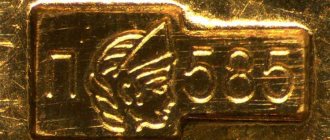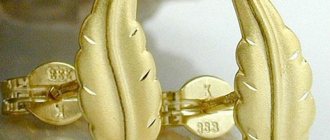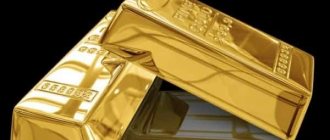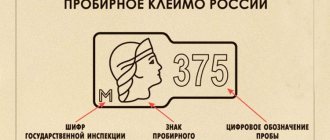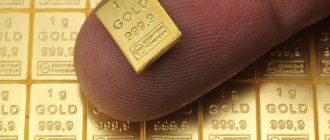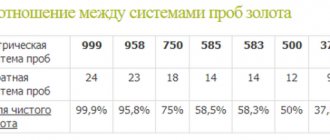So, the price of 1 kilogram of gold is approximately 1,850,000 Russian rubles
In dollar equivalent, this will be $36,865.
On the world gold market, quotes are formed largely based on the results of daily speculative transactions. At the same time, experts try to link the cost of gold with the amount of precious metal actually mined and produced. But there is no direct relationship observed here. There is only an increasing fall and winter demand associated with the traditional Asian wedding season. Clearer patterns are observed in the foreign exchange market. The chaotic nature of this segment of the financial system forces many investors to turn to gold, which is more stable in the long term. And many experts explain today’s rise in prices for the yellow metal by the fall in the exchange rate of the US dollar.
People stop trusting unstable currencies and turn their attention to gold
Measurements of gold: kg and troy ounce
One of the foreign units of measurement is the troy ounce. It allows you to determine the mass and corresponds to 31.1034768. In the Middle Ages, in the French city of Troyes, a measure of weight was used - an ounce. Today it is used in jewelry, to measure the mass of particularly valuable components in the manufacture of cosmetics, as well as in the banking sector, but not everywhere. The Central Bank sets the price of precious metals daily, taking into account the price per troy ounce on the world market (set by the London Stock Exchange).
Convenient investment
The cost of 1 gram of investment gold with a three-nine purity is set every day by the Russian Central Bank. It is published in official sources. But this is not the price that is used when purchasing precious metals. Based on it, calculations in the financial sector only take place.
The price of precious metal in bullion will always be higher than the exchange price due to the costs of production, sale and payment of VAT of 20%. Thus, taking these factors into account, the cost of the bar will depend on its weight and the content of chemically pure gold in it. So, if the sample of a precious metal is “three nines,” this means that 1 kilogram of the alloy will contain 999 grams of yellow metal.
If you want to save money, open a metal bank account. In this case, there is no need to pay VAT, spend money on renting a cell, etc. Again, such a deposit is easy to cash out at any time.
Is it profitable to invest in bullion?
The economic situation leaves much to be desired, and we want stability. More and more people are thinking about investing in “eternal values”. Gold is the leader among them because it has not depreciated in value from the time of the Incas to the present day.
Advantages and disadvantages
Gold is a reliable investment. Its rate will not suddenly collapse overnight. This is reliable financial protection from a crisis, and by buying metal, you become the owner of a real physical asset that you can touch with your hands. The entry threshold for such an investment is low: you can even buy a bar weighing 1 g.
But there are many disadvantages here:
value added tax 18% (it applies to the entire amount paid by the investor); storage problem (spending on a safe deposit box or safe); substantial commission on resale; the need for careful handling: pure gold is sensitive to mechanical damage, which reduces the value of the bar (damaged and with erased markings are accepted only for re-melting) and complicates its sale; a bullion purchased at Sberbank may not be accepted at other banks; low liquidity (the ability of an asset to be quickly sold at a market price or close to it); the certificate cannot be restored, and without it no bank will accept the precious metal. In this case, there is only one chance to return the funds: to sell the gold as scrap for an amount significantly below the market price; gold is not an investment to make quick money; most often it takes years for it to bring tangible income.
Weight and quality features of gold
Gold has all the properties that are characteristic of metals:
- Electrical and thermal conductivity;
- High strength;
- Plastic.
Gold also has a special, metallic luster. It should be noted that each group of metals has its own characteristic metallic luster. Overall, metallic elements are found in 75% of all naturally occurring elements, but not all are found in nature in their pure form. The most valuable and rare metals include gold and platinum. Both metals are characterized by a fairly large specific gravity (19.3 gcm3 and 21.45 gcm3, respectively). It should be noted that the specific gravity of heavy metals, including tungsten and gold, is almost the same. Thanks to this property, gold can be mined by washing it from relatively light particles of clay and sand contained in the washed rock.
However, gold is a very soft metal; in addition, it is also very heavy. In order to find out how much one cube of gold weighs, you can use a special formula or table. This figure is 19.320 kg. The hardness of gold is 220-250 MPa (Brinell) or 2.5 (Mohs scale).
The high cost of gold is primarily due to its rather low content in the earth’s crust - 0.5 - 5 mgt. The volumetric or specific gravity of gold can be found by the formula – y=PV, where P is the weight of gold, and V is its volume.
Interesting Facts
The significant value of the described product was noticed by representatives of ancient civilizations. For example, Egyptian scripts contained information according to which, in the process of trade settlements, 1 g of the yellow metal was compared with 2.5 g of silver. This factor is quite understandable, because during the growth of cities, an economy was created and strengthened, which subsequently contributed to the formation of separate states.
Gold as a universal method of payment became established during the development of foreign economic and commodity-money relations. As a standard, it was measured in grams, for which regular weighing procedures were carried out. In order to facilitate the calculation procedure, back in the 6th century BC. e. The first blanks made from a mixture of silver and gold appeared.
The history of the appearance of gold in bars
Gold has been used as a means of payment since ancient times. But then a difficulty arose when paying - it was necessary to weigh each time and determine the quality of the valuable metal. This made transactions difficult.
Approximately 600 BC. e. The ancient Indians began to use a new method - they smelted an alloy of silver and gold, today it is called electrum.
The precious metal had a certain value and weight, which had to be indicated on the product (a state mark was placed). This made it possible to solve the problem, which was the need for constant monitoring of the quality of gold in the absence of extensive opportunities.
Dimensions of 1 kg gold bar
Info
Since ancient times, gold has been considered a sign of wealth and prosperity. In fairy tales, rich people promised to make them rich for one service or another; in adventure films, heroes went through many tests in search of gold. Nothing has changed today. Gold is still considered one of the most expensive metals.
Its high price is due to the fact that there is very little of this metal in the world, for example, when compared with iron, copper, etc.
Gold is a good investment. Even if it does not rise in price at a rapid pace, you can be sure that your money is safe, because it will not become cheaper. As an investment, you should not use jewelry from jewelry stores, but bank bars with documents.
Where else can you buy a gold bar?
Most often, the purchase/sale of Au is carried out through a bank (this is the most recommended option). But there are others:
- transaction with private individuals;
- shops that have a license;
- jewelry is the rarest option.
In private transactions, there is a high risk of losing money, and it is unlikely that you will be able to buy a quality product. Reasons: the seller does not have a certificate or receipt; may get robbed.
physical characteristics
Gold is a fairly heavy metal; its density ranks seventh among all metals on the periodic table and is 19.32 g per cubic centimeter. Specific gravity is expressed differently in different unit systems. In the SI system it is newton per meter cubed, but most often jewelers use a non-systemic unit - grams per centimeter cubed. This is done for convenience, so the density will be equal to the specific gravity.
Gold has the following physical properties:
- high strength;
- thermal conductivity;
- electrical conductivity;
- plastic;
- characteristic shine of metal.
The peculiarity of gold is its inertness. It is this characteristic that allows the metal to have the status of noble. This makes it possible to produce gold jewelry, because it does not oxidize and retains its original appearance for a long time. For the jewelry industry, there is only one disadvantage of gold - its softness. This drawback is circumvented by adding other metals to the alloy - alloying, which changes not only this characteristic, but also others: density, melting point.
Studying the quality of a product using special means
Some properties of different grades of gold are presented in the table.
| Try | Brand | Color | Compound | Density g/cm3 | T melt | |
| Silver (+- 0.5%) | Palladium | Nickel | Zinc | |||
| 375 | ZlSrM 375-160 | red | 16 | 11.54 | 880-900 | |
| ZlSrPdM | cream | 10 | 3,5-4,1 | 11.56 | 860-975 | |
| 375-100-38 | ||||||
| 585 | ZlNTsM 585-125-60 | white | 12,0-13,0 | 3,6-4,4 | 12.85 | 870-950 |
| ZlSrPd 585-225-160 | white | 25.5 | Ost. | 14.76 | 1175-1220 | |
| ZlSrM 585-300 | green | 30 | 13.92 | 835-880 | ||
| ZlSrM 585-200 | yellow | 20 | 13.6 | 830-845 | ||
| ZlSrM 585-80 | red | 8 | 13.24 | 880-905 | ||
| 750 | ZlSrNTs 750-125 | white | 12.5 | 15.38 | 900-950 | |
| ZlSrPd 750-100-150 | 15 | Ost. | 16.44 | 1250-1300 | ||
| ZlSr 750-250 | green | 25 | 15.96 | 1040-1045 | ||
| ZlSrM 750-150 | yellow | 15 | 15.45 | 885-900 |
High electrical conductivity characteristics along with inertness have made gold also an industrial metal. In terms of distribution, it is inferior to silver, but surpasses it in another quality: over time, silver oxidizes, but gold does not.
Specific gravity also plays a role in gold mining and in the production of alloys from it. High-quality alloys are obtained only by fusing metals with a small difference in density. Metals with a greater weight than gold can float during melting and form an inhomogeneous structure.
The melting point of gold is 1095 degrees. In addition, there is a hidden melting point. It is measured in kilocalories and represents the energy required to destroy the crystalline structure after the metal has been heated to its melting point. Gold is a diamagnetic metal - a metal that is not attracted to a magnet.
999 gold
In the mid-twentieth century, the United States decided to store the country's gold reserves only in bullion. The weight of the bar was set at 400 troy ounces. Now the mass of a gold bar is 11–13.3 kg. One ounce is 31 grams.
Back in the Middle Ages, the weight of one gold coin was 30 grams, and it turned out that this weight measurement was very convenient for jewelers. It is still in use today. In addition, in the metal stock market, the price of gold is set in dollars per ounce, not per gram. So the mass of gold in the coin is one ounce.
How to determine specific gravity at home?
To do this, you will need scales whose accuracy is about a gram. After weighing into a glass or any other container where there are marks on the volume of liquid, lower the product and see how much the volume has changed. The mass divided by this indicator will be equal to the density of the metal, and accordingly, the specific gravity in units of g/cm?
Characteristics of individual alloys
The cost of gold per 1 gram in Sberbank today
The density of a material is a physical property that is determined by the mass of a certain unit of volume. The measurement of the parameter is determined by the ratio of the mass and size of the body.
Rare samples
The highest and rarest standard is 999. It cannot be found on jewelry. This means pure precious metal that is not used for production. The density of 999 gold is 19.3 grams per cubic centimeter.
Slightly more than 96% of pure gold is contained in products marked 958. However, they are extremely rare due to the fragility of the metal and the impossibility of polishing it. The density of this material is 18.3 g/cm3.
900 and 917 samples are rare in Russia. High-quality jewelry is made only to order. Previously, coins were minted from gold metal of the highest standard, so the samples were called coin samples. The composition of gold in them is 90%. The alloy contains silver and copper in prescribed proportions. Density indicators for such alloys vary from 17.3 to 17.9 grams per cubic centimeter.
75.5% of the precious metal is contained in products of 750 standard. Additionally, palladium, copper, platinum, silver, and nickel are introduced into the alloy. A fairly durable metal that can be processed, polished and has good strength characteristics. The density of 750 gold varies from 14.4 to 17.4 grams per cubic centimeter.
Most Popular
585 standard (583 in the Soviet Union) contains more than 58% pure yellow metal. The main components of the alloy are silver, nickel, palladium and copper. This is the most popular alloy in jewelry. It is durable, hard, and easy to work with. Most of the jewelry is made from 585 alloy. Its average density is 13 g/cm3.
Products marked 500 contain 50.5% gold. The remaining 49.5% is made up of copper and silver, and not in equal proportions, so the color of the product directly depends on the amount of silver in the alloy. The density of the alloy is 12.3 g per cubic centimeter.
375 standard is considered the cheapest. It contains 38% pure yellow precious metal, the rest is occupied by copper and silver. Low-grade gold tends to deteriorate in appearance when exposed to oxygen and tarnishes over time. The density of the alloy is 11.5 g/cm3.
As a rule, the alloy contains only elements that have a similar specific gravity and density to gold. However, there is a danger of getting a fake instead of gold jewelry. Most often, tungsten is disguised as a yellow precious metal. It has similar performance and appearance. It is extremely difficult to distinguish a fake from the original.
Buying and selling
Trading in this product is primarily the prerogative of banks. You can not only buy gold there, but also leave it for storage. Such a financial investment has a high level of profitability, but only in the long term, since the purchase price will be higher than the sale, as with other foreign exchange transactions.
What determines the price of a bank bullion?
In addition to the current gold rate, the price of the product is tied to its weight. The buyer pays the most money if he purchases metal weighing 1 gram. The higher the weight of the ingot, the cheaper the gold is per gram.
Products in poor condition, on the contrary, are accepted at banks, charging an additional commission of about 3% of the value of the metal.
How much does a gold bar cost in Russia 1 gram and 1 kg
As of today. 1 gram of gold costs:
| Price 999 standard according to the Central Bank | Market value of the sample today | Scrap price | Price in jewelry |
For an ingot weighing 1 kilogram you will have to pay (in million rubles):
Where is the best place to buy bullion?
It is always better to purchase such things from financial institutions. In this case, the possibility of forgery is eliminated and the availability of the entire package of accompanying documents is guaranteed.
Where and how to store the bullion
The storage of gold, including in coins, should also be entrusted to the bank. It’s not safe to keep such valuables at home, and there’s no point in keeping them. The financial institution opens a metal safekeeping account for the client - an analogue of a safe deposit box. You can put all your precious savings there, add new ones or withdraw the necessary part.
The cost of such a service will not depend on the number of items, their weight and even the metal from which they are made - all your savings in precious metals can be kept in one place.
To see how Russia's gold reserves are stored, watch the video:
Physical form of investing in gold
In ancient times, identification marks were placed on valuable metals. In the modern world, different types of stamps are also used. But standardized signs were introduced centuries ago. Before that, each manufacturer put their own stamps and engravings.
Thanks to branding, the purchase and sale system has been simplified. Gold has become even more widespread; today it is one of the investment instruments.
It is distinguished by a set of properties:
- stability in the long term: the price is maintained even in difficult times (when disasters, wars, economic crises occur), while its slight decrease is possible, but even then Au remains the most valuable resource for which goods and services can be exchanged;
- divisibility: the production of coins and bars does not change their properties, they are just as valuable as a large piece of precious metal or a nugget;
- preservation of physical properties: valuable metal does not lose its attractiveness and is not subject to corrosion.
For investment, different types of bars are used. They are standardized and must comply with GOST parameters. It is permissible to produce ingots to order; they may differ in size and weight. The stigma is also different in this case. Sometimes such products are even marked with a portrait of the owner.
Bank coins
Coins vary in type of material, weight and size. They are produced in series and may have a name. A separate category presents those that are produced in limited quantities. The price of this type of valuable metal is higher than those coins that are produced in large quantities. It is believed that investment gold should have the highest value (high purity), but there are different hallmarks starting from 900. Among them there are also non-standard options. But the most popular products are 999. They are also the most valuable. Accordingly, the cost of such coins is higher.
Weight and marking of gold bars
Most often, the population purchases measured gold bars. The established mass of such bricks does not exceed 1000 grams. The largest weight of a bar sold to the public is 500 grams. The smaller the weight of one copy, the more expensive it will cost the buyer per 1 gram. The minimum weight of 1 gold bar is 1 gram. The release form is usually rectangular, but other options are possible. If desired, the manufacturer produces plates of the ordered shape, up to round. The weight of measuring bars is 1, 5, 10, 20, 50, 100, 250, 500 grams.
For bars of the “Standard” type, the shape of a truncated pyramid is adopted. The weight of a gold bar in this category ranges from 1000 g to 13.3 kg.
The dimensions of a standard bar are strictly regulated and deviations from the norm are not allowed
The Central Bank has determined the following standards for bullion of precious metals:
- length;
- width;
- no damage (chips, stains, scratches);
- presence of markings.
Each plate weight has its own parameters. The domestic standard for bank gold does not take into account the thickness of the bar (for measured gold). The information about the ingot is printed on the front side. The marking must indicate information about weight, sample, bar number, name of the precious metal, production date, and information about the manufacturer. The latest information is printed on the oval of the ingot. If the mass of the bar is less than 50 g, then the ingot number is printed on the reverse side. The marking “Nv” means that the manufacturing plant is in Novosibirsk, “Ek” means the Yekaterinburg manufacturer, “Kr” means the Krasnoyarsk plant. Gold bars may have a concave or wavy surface on the reverse side. This is due to the shrinkage of the metal during storage.
The manufacturing method is indicated on the bar - SLZ (cast gold ingot), SSHZ (stamped). Powder-made plates are extremely rare. The technology for making such bars is a complex process (an ingot is melted from precious metal powder using the electrolytic method). Powdered bars are the cheapest, stamped bars are the most expensive.
Types of ingots
Gold bars are used as an investment object, raw material for making jewelry, and gifts. Depending on the method of application, the metal is given different weight, shape and appearance. Refineries are engaged in the production of such products.
Measured
Bullion bars are intended for individuals and can be bought and sold at a bank or jewelry store. For ease of circulation, they are issued in different weights, similar to the denominations of banknotes.
Standard
The standard version is not intended for everyday use. Its purpose is as raw material for jewelry workshops and factories, so the form of their production is not very diverse.
Technological differences
The methods for making such things also differ. Small products - up to 50 grams - are produced using stamping. The surface of the metal turns out to be very beautiful - smooth and neat, with perfectly executed details of inscriptions and drawings.
Larger specimens are produced by casting. The appearance of cast products is not so perfect, but this manufacturing method is cheaper.
There is also a powder production method - by electrolysis, but it is not used in Russia.
The Double Gold Market Phenomenon
Before 1973, there were two gold markets. In the official segment, Central Banks traded precious metals at reduced prices, thereby supporting the American dollar. In the private segment, the price was formed based on real supply and demand. After America abolished the gold backing of the dollar, the official market simply collapsed. In the fall of 1973, the central banks of leading countries stopped operations with gold at reduced prices. The artificial price parities of the official gold market were completely abolished by 1978.
The graph shows the upward trend in the value of gold in the first decade of the 21st century.
The market price of gold bullion can be influenced by economic conditions, politics and speculation. The rise in value is driven by increased household, industrial and investment demand. If the economy is in a fever, inflation and payment imbalances are growing, along with fluctuations in exchange rates and lending rates, then the cost of gold always increases.
At the end of the 70s of the last century, the West was literally gripped by a “gold rush”. The price of 1 kilogram of gold went through the roof. Then, until the end of the century, negative dynamics were observed, interspersed with minor changes.
The main reason for what is happening is the strengthening of the position of the US dollar and US government bonds against the backdrop of curbing inflation. As a result, interest in the yellow metal has diminished in many countries.
To compensate for budget deficits and reduce public debts, many countries at the end of the last century began to sell off their gold reserves.
When considering global market processes, it is also worth taking into account the multifaceted nature of gold itself, which can be a promising asset, a foreign exchange reserve, and a necessary raw material.
How much does 1 kg of gold cost in Kazakhstan?
1 Gold ounce = 759,266.36 Kazakhstani tenge
| Golden Block | Gold price in Kazakhstan tenge (KZT) | Gold price in US dollars (USD) |
| 1 kilogram of gold | 24,413,709.37 | 57,090.20 |
| 1 gram of gold karat 24 | 24,413.71 | 57.09 |
| 1 gram of gold carat 22 | 22,379.23 | 52.33 |
| 1 gram of gold carat 21 | 21,362.00 | 49.95 |
Ingots
With sharp fluctuations in the ruble and foreign currencies, gold bars become a reliable investment for many Russians. However, there are difficulties - you have to pay a fairly large tax for storing precious metals.
According to manufacturing technology, ingots can be cast, stamped, or powdered. Measured ingots are used for storing gold by the population, standard ingots are used for melting into other products.
Measured gold bars are bars weighing up to 1 kilogram and having a purity of 999.9. They are marked with weight and manufacturer. Such ingots are manufactured according to the Russian standard - GOST R 51572-2000.
Requirements for ingots:
- For each denomination of ingots, deviations in the following parameters are allowed: length, width and thickness.
- It is possible to change the shape and size of the bars, which is specified in the transaction agreement.
- The presence of dirt, grease stains, and scratches on the metal surface is unacceptable.
- Due to the softness of gold, bars can become deformed over time and take on a different shape - curved, concave. The surface may become wavy.
- The marking can be either curved or convex, but legibility in indicating the mass of the ingot is required. Correction of the inscription is unacceptable.
- The presence of a distinctive sign on one or more sides of the product is permitted.
Mandatory markings on domestic ingots:
- “Russia”, circled in an oval;
- mass in numbers;
- the name of the metal is “Gold”;
- sample or share;
- manufacturer's mark.
The registration number of the ingot is indicated below.
Many banks offer measured gold bars. Sberbank is the leader in Russia in the exchange of funds for precious metals and its storage. Other banks also sell gold and offer storage services.
Gold bars of different denominations
Yellow currency is stored both in the form of coins and in the form of bars of different weights. How much does a gold bar weigh? There are several denominations: 1, 5, 10, 20, 50, 100, 250, 500, 1000 grams. The metal purity in measured ingots is standardized and amounts to 999.9, which corresponds to the Russian state standard. The production of ingots and their marking are carried out by refineries.
Sberbank branches sell bullion at the following prices:
- A whole gold bar weighing 1 gram costs about 1850 rubles if the bank buys the gold. Banks sell a similar resource at much higher prices - 2700-2900 rubles per 1-gram denomination. This price includes value added tax.
- 5 gram denomination cans sell for 12,400-12,700 rubles. Banks can accept the same gold bar from the population, depending on its technical condition, for a cost of 9200-9400 rubles.
- A ten-gram standard bar of yellow metal will cost the buyer approximately 24,000 rubles, while it can be sold to a jar for 18,000 rubles.
- A denomination of 20 grams is valued by banks at about 49,000 rubles. The sale of the same measured ingot will bring its owner about 36,000.
- A 50-gram gold bar will cost the buyer approximately 121,000 rubles. A bank can accept 50 grams of refined gold from a private person in exchange for about 92,000 rubles.
- Banks sell a 100-gram gold bar for 242 thousand Russian rubles. A private person can sell the same gold bar for a price of about 184,000 Russian rubles.
- A quarter kilogram of a refined gold bar will cost the buyer 603,000. Among the population, banks accept bars weighing 250 grams for approximately 460,000 rubles.
- The price of a half-kilogram ingot is about 1,205,000 rubles. A private individual can sell his 500-gram stock for 921,000 rubles.
- A gold bar weighing one kilogram costs 2,408,700 rubles in Sberbank branches. They accept similar bars for sale at a cost of 1,843,000 rubles. Value added tax of 18% is also taken into account.
Some bars are produced in special packaging that protects them from dirt and grease, as well as damage.
Bank gold in measured gold bars is also produced in 585 standard, the content of the main metal in which is 58.5%. The remaining share comes from the alloy - other metals that give strength to the ingots.
Technological differences
To understand how much a gold bar weighs, it should be borne in mind that there are several technologies for its production, as a result of which the final product is divided into:
- Powder products.
- Stamped.
- Cast.
Powdered ones are made from metal powder by electrolysis. These are the cheapest gold bars, they are rare in international banking systems, and are completely absent in Russia.
Stamped products are produced by exposing a stamp to hot metal, they have an attractive smooth surface, are designated as SSHZ and weigh no more than 500 g. Despite the fact that the cost of their production is higher due to modern technologies, their liquidity is also higher.
Cast gold bars are produced by casting molten metal into a finished mold; they weigh more than 500 g and are designated as SLZ; they are cheaper than stamped ones, but more expensive than powder ones.
Russian measuring products according to GOST can be produced both cast and stamped, while standard products are always produced only cast.
Ingot condition
Sberbank divides gold bars according to their condition into two groups:
- Ingots in excellent condition;
- Ingots are in satisfactory condition.
An ingot in excellent condition must have a clean surface without damage (dents, burrs, scratches, foreign inclusions, abrasions and stains), and it must not only have a manufacturer’s certificate, but also its proper condition.
An ingot in satisfactory condition may have the mentioned surface defects that do not affect the weight of the ingot, as well as improper condition of the certificate for the ingot (extraneous inscriptions or stains that affect the readability of the certificate, a torn certificate or the absence of a part (piece) of the certificate). In addition, if you bought a gold bar from any other bank and decided to sell it to Sberbank, then the presence of the symbols of a “foreign” bank on the bar itself and (or) a seal in the certificate for the bar of another credit organization will be enough to recognize the condition of the bar as satisfactory, even if The ingot itself and the certificate are in perfect condition externally.
Obviously, Sberbank buys bars in satisfactory condition cheaper than bars in excellent condition. For gold measuring bars, the difference in price is on average 0.3%, and the smaller the bar, the greater the difference in percentage. For example, at prices for bars as of May 2, 2012 (see prices for bars in Sberbank today), a measured gold bar weighing 1 gram in excellent condition will be purchased by Sberbank for 1,559 rubles, and in satisfactory condition - for 1,539 rubles. (difference of 20 rubles or 1.28%). If you take a gold bar of 1000 grams, then the difference in price in rubles is 600 rubles, and in percentage terms it is 0.039%. For measured silver bars, the average markdown percentage based on the condition of the bar is higher and amounts to 0.9%.
If the ingot has damage that causes a change in the weight of the ingot or its dimensions do not comply with GOST standards, then Sberbank will refuse to buy such an ingot. The absence of a certificate for the bullion or its deterioration (it is impossible to read the contents) will also serve as grounds for refusal of redemption by Sberbank.
Proper storage of bullion is the key to maintaining the excellent condition of the bullion and, accordingly, a higher selling price to the bank.
New world record
Until recently, the record holder for its weight was a gold bar in Taiwan weighing 220 kilograms. The Japanese surpassed this result by casting a precious piece weighing 250 kilograms and costing 12.5 million dollars, and submitted an application for this to the Guinness Book of Records.
There is a statement that the smaller the weight of the ingot, the more expensive each gram is worth. And the larger its size, the cheaper it will be per gram of yellow metal. But if you look at the huge gold bars (the photographs clearly demonstrate them), you can doubt the veracity of this statement.
Measured (cast) and standard (stamped)
Compared to standard ones, measured gold bars look more beautiful. Photos of them can be seen in this article. Measured ingots of the purest standard are produced in different weights: from 1 gram to 1 kilogram.
There may be a concavity on the surface of the ingot as a result of metal shrinkage with a depth of no more than 5 mm.
A standard gold/silver bar on its large base should contain the following markings:
- ingot number;
- grade of precious metal;
- mass fraction of precious metal (sample);
- ingot mass;
- symbols of the country of origin;
- refinery trademark;
- year of production of the ingot.
Standard platinum and palladium bars
Standard platinum and palladium ingots must meet the following requirements in accordance with the specified GOSTs:
- The maximum weight of standard platinum bars can be 5500 grams. The maximum mass of a standard palladium ingot is 3500 grams.
LBMA (London Bullion Market Association) and is sold in all countries.
The cast kilogram gold bar is the largest bar in the Heraeus product range. Popular among investors both in Europe and abroad.
Each Heraeus 1000g gold bar:
- •1000 grams of 24-karat 999 gold;
- •ingot dimensions - 117 mm x 51.5 mm x 9 mm;
- •blister packaging that protects against damage;
- •quality certificate from the Heraeus refinery;
- •a unique serial number, which is indicated on the ingot itself and in the certificate.
Why do investors choose Heraeus 1kg bar?
As soon as savings appear, the question arises of how to preserve the accumulated amount, and also, preferably, increase it.
By agreement between the customer and the manufacturer, the weight of the ingot may differ.
- Gold bars must have the shape of a regular truncated pyramid with certain dimensions of the base sides and height (thickness). The refinery has the right to produce ingots of other shapes and sizes as agreed with the customer.
- The standards establish grades of gold and silver, and also determine the composition of impurities and their maximum content in the alloy.
- The surface of the ingot must be free of sagging, burrs, grease stains and deposits, and the presence of slag and other foreign inclusions is not allowed.
- On the surface of the ingot, the presence of stripped areas with a depth of no more than 1 mm for standard gold bars and no more than 3 mm for standard silver bars is allowed.
Important
By agreement between the customer and the manufacturer, ingots of other weights can be produced.
- Ingots must be rectangular in shape with certain side dimensions: length 100 + 3 mm, width 65 + 2 mm, the height of the ingot is not regulated. The manufacturing refinery can produce platinum and palladium ingots of other shapes and sizes as agreed with the customer.
- GOSTs establish acceptable grades of platinum and palladium and the composition of impurities, as well as the maximum content of each impurity component in the alloy.
- The surface of a standard palladium and platinum ingot must be machined. The presence of any foreign inclusions is not allowed.
In this case, let's start with information about what measured and standard bars of gold and precious metals are available.
Bullions produced in the European Union comply with international standards established by the London Bullion Market Association (LBMA).
All bars must meet state standards, which you will learn about in this article.
How much does a 999 gold bar weigh - types, cost and investment tips
Quotes of metals compulsory medical insurance in Sberbank for today
Home » Investments in gold » Precious metal bars
Gold has long been one of the most reliable and profitable areas for investing savings. The gold market is least susceptible to shocks from financial and political crises. In addition, this noble metal is exhaustible and its value will steadily increase over the years. At the same time, not all citizens know where and in what weight they can purchase pure gold bullion, designated 999 fine.
Main types of gold bars
All bars are cast mostly from pure gold without impurities (999 fineness) and can be found in two varieties, namely:
Measured gold bars are produced weighing up to 1 kg and are available for purchase by individuals and legal entities. There are a number of GOST requirements (R51572-2000) that apply to products of this class:
Standard gold bars are used for production purposes and are not sold. They essentially serve as a guide for smelting measuring ingots as a sample. The GOST requirements (R28058-89) for such products are as follows:
All gold bullion products are divided according to their production technology into the following varieties:
In foreign countries, there is also a special type of 999 gold bars - powder form. However, it is not used in Russia.
Weight of 999 gold measured bars
It was established above that it is measured gold bars that are the object of investment that is available to any citizen who has free funds. At the same time, you can purchase gold bars at any commercial bank that includes operations with precious metals in its list of activities.
Thus, at Sberbank of Russia you can purchase 999 gold bars of the following weight categories:
Currently, this particular financial institution occupies a leading position in the Russian Federation in terms of the number and volume of transactions with precious metals in general and with gold in particular. After acquisition, gold can be handed over to the person or stored in a bank safe deposit box.
What is the price of 999 gold bars in Russia?
The cost of gold bars, which are both sold and purchased by commercial banks of the Russian Federation, depends on a number of important factors, including:
It is also important to consider that there is a difference (spread) between the selling and purchasing prices of gold bars. Thus, in 2021, at Sberbank of the Russian Federation, 1 gram of gold bullion could be purchased for 3,200-3,600 rubles
At the same time, it was possible to sell the same amount of precious metal only for 2,200-2,500 rubles.
Thus, purchasing gold bullion is a very real prospect even for private investors, since investments can be made in metal weighing from 1 to 1000 grams in any commercial bank that carries out this type of activity. In the future, the purchased bullion can also be sold through banking institutions.
Iridium – price per 1 gram in rubles in 2021
Where can you buy gold bars of 999.9 purity in Russia - list of banks
How to profitably sell a gold bar to a bank - practical advice
How to buy a gold bar correctly from Sberbank of Russia - step-by-step instructions
Sberbank gold bars - prices, catalog and purchase procedure
What types of gold bars are there - measured, standard, produced by GOST standards?
Marking and weight of measured and standard bullion bars of precious metals
Ingot weight and dimensions
In Russia, ingots weighing 1, 5, 10, 20, 50, 100, 250, 500 and 1000 g are produced. Foreign-made products also come in weights of 2, 2.5 grams. 1 troy ounce is often found, equal to 31.1 grams.
International measure
The most common measure for gold abroad is the troy weight system. In bank accounts, gold can be recorded in both the metric system (grams, kilograms) and ounces. This system is used not only for precious metals: it is used in pharmacy and cosmetology to account for particularly valuable components.
Requirements for the gold bar standard
The list of requirements is regulated by GOST R 51572-2000. The document contains dimensions and maximum weight deviations from the norm, regulates the absence of cracks, foreign elements, damage and contamination, and lists permissible deformations that occur during production.
Each product has its own unique number, which is certainly indicated directly on the ingot. In addition, mandatory information is applied to the metal using markings:
- a stamp in the form of an oval with the inscription “Russia”;
- exact weight;
- the inscription "Gold";
- noble metal sample;
- brand of the refinery manufacturer.
All inscriptions must be on the title side of the product and be legible. Corrections or merging of letters are not allowed in the text. The presence of defects is the reason for the decrease in the value of a precious item.
However, such requirements are not mandatory. Gold can have any shape, weight and size in case of individual customer requirements.
Weight of a standard ingot in kg in Russia
The requirements are regulated by GOST 28058-89. Permissible weight – from 11 to 13.3 kilograms. The shape of the products is a bar in the form of a truncated pyramid. The document also determines the grade of metal, appearance without defects, permissible deformation and a list of data printed on gold.
Gold bar sizes 1 and 10 kg
The size established for a kilogram measured product: length 105-116 mm, width 48-52 mm. The height of the object is not regulated.
The following proportions are used in standard samples (with a permissible deviation of ± 5 mm):
- larger base, mm – length 54, width 88;
- smaller base, mm – length 229, width 59;
- height – 35 mm.
Weight of a gold bar in storage
The precious metal of the Russian Gold and Foreign Exchange Reserve is stored mainly in objects weighing from 1 to 14 kg.
The United States prefers to store its savings in the form of bars weighing 400 troy ounces, or 12.44 kg.
How much does the largest bar weigh today?
The largest specimen in the world belongs to Japan. Its weight is 250 kilograms, which is even recorded in the famous Guinness Book of Records.
In second place is Taiwan, the happy owner of a piece of gold weighing 220 kg.
How different criteria affect the price of gold metal
Frequency or trial.
The main factor when valuing precious metals. The highest quality standard in banks and special trading platforms is 9999. These numbers indicate that 1000 g of the bar contains 99.99% pure gold without inclusions of other elements. Samples of 925 and below are used only when turning jewelry, otherwise rings and pendants made from pure material will be very soft and will quickly deteriorate. Ingot type. For sales to individuals, banks and thematic platforms use measured gold bars with a maximum weight of 1000 g. There are also bars whose weight ranges from 11 to 13.3 kg. In addition to weight, they differ from measured ones in purity and contain 99.95% pure gold. Large bars are purchased by large-scale gold and foreign exchange funds, foreign investors, and central banks. The relationship between the value of a gold bar and its price is clear without further consideration. However, modern banking institutions are causing a little confusion in this matter. When purchasing precious metal for storage or further investment, you need to pay attention to large bars weighing more than 500 g. In practice, 500 g purchased in one bar costs much less than 10 gold plates of 50 g each
Roughly speaking, apply to gold as well
Above are the main pricing factors on the territory of the Russian Federation. In addition to those indicated, the cost of precious metal bars is significantly influenced by the situation on the world market and fluctuations in the dollar exchange rate.
Tax
Buying gold bullion is a good investment if you want to protect your money. But for this you need to have large funds and invest them for a long time. A serious obstacle on this path is the 18 percent VAT on the cost of gold.
There are also various kinds of “metal accounts” in banks. They will save you from VAT and eliminate the hassle of storing bullion. But they won’t be able to give you the unique feeling of owning a precious metal!
Sberbank of Russia occupies a leading position in the precious metals market, having an impressive network of branches throughout Russia. In addition to operations with compulsory medical insurance and precious coins, Sberbank sells bars of gold, silver, platinum and palladium. What precious metal bars can be purchased at Sberbank, how bars are classified according to their condition and the presence of certificates, and how this is reflected when selling precious metals to the bank - these issues are covered in this article.
So, let's start with the fact that at Sberbank you can purchase measured and standard ingots produced at Russian refineries in accordance with current Russian GOSTs and international standards. There is no point in studying the standards before purchasing a gold bar from Sberbank or any other Russian bank, because... Acceptance of ingots from the manufacturer involves checking each ingot. If the ingot does not meet the standards or has unacceptable defects, then the ingot is sent to the manufacturer for remelting.
How to buy bullion at Sberbank
If an investor decides to make this kind of investment, it is necessary to contact one of the reliable financial organizations located in the Russian Federation. Using Sberbank as an example, we can examine in detail the procedure for purchasing 999 fine bullion bars. The algorithm for purchasing will be as follows:
- Visit a branch of the organization where transactions with precious metals are carried out;
- Present the necessary documents - for individuals this is a passport of a citizen of the Russian Federation, for legal entities a certificate confirming registration with the inspection committee of the Assay Committee;
- Select the weight of the product and check it using a scale. The permissible error is 0.01 grams;
- Purchase an ingot and also receive a certificate containing detailed information about the product and manufacturer.
It should be remembered that, in addition to the cost of the bullion itself, the consumer must pay 18% VAT, which is levied on all transactions carried out in the country with precious metals.
The world's largest gold bar is located in one of the Japanese museums. It weighs 250 kilograms and costs more than $3 million. This metal has always been desirable and expensive, not only due to its beauty, but also due to a number of useful properties for people, which include the fact that it does not oxidize, does not tarnish, serves as a conductor and is used in medicine as an antiseptic.
However, its main area of application is monetary relations. Gold bullion is the world's hardest currency because, unlike money or securities, it cannot lose value.
You can buy them for investment purposes at any large bank, however, before making a purchase, you should find out more about them so as not to make a mistake with your choice. You should know that there are measured and standard gold bars, as well as the standards of Russian manufacturers according to which these bars are manufactured. Overseas smelters follow their own standards set by the London Platinum and Palladium Market, abbreviated LPPM, and the London Bullion Market Association, abbreviated LBMA, referred to as the “London good delivery” standard.
